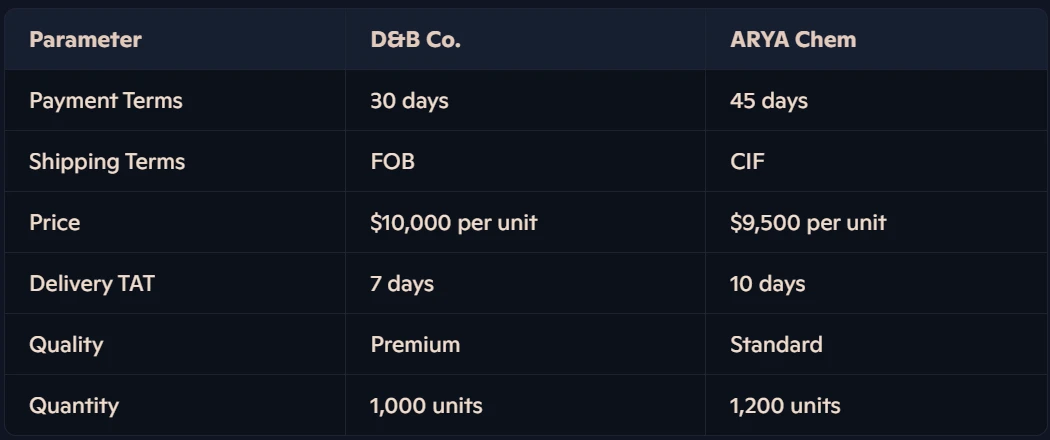How to Compare Supplier Quotations against RFQs Effectively
Feb 9, 2025
Comparing supplier quotations effectively is crucial for making informed purchasing decisions. Here’s a structured approach to ensure you evaluate quotes thoroughly and select the best option for your business.
Published By AuraVMS



Steps to Compare Supplier Quotations
1. Establish Clear Criteria
Define what factors are most important for your evaluation. Common criteria include:
Price: The total cost of goods or services.
Quality: Assessments based on product specifications or past performance.
Delivery Terms: Delivery timeframes and other conditions for delivery.
Payment Terms: Conditions regarding payment schedules and discounts.
Customer Service: The level of support and responsiveness from the supplier.
2. Standardize Quote Formats
Request quotes in a standardized format to facilitate easier comparison. This may include itemized lists of costs, delivery schedules, and terms of service. Consistency in format helps identify discrepancies and makes the analysis straightforward.
You can use software like AuraVMS to collect quotations in a standard format that is easy for comparison.
3. Use a Comparison Table
Create a structured comparison table that breaks down each quotation into its components. This visual representation allows for quick assessments across various criteria. An example layout could look like this:

4. Consider Qualitative Factors
Beyond just numbers, assess qualitative aspects such as reliability, reputation, and customer service history. These factors can significantly influence the overall value of a supplier.
5. Analyze Additional Costs
Include potential hidden costs in your analysis, such as shipping fees, taxes, and duties. Ensure that all costs are accounted for to avoid surprises later on.
6. Evaluate Discounts and Payment Terms
Look for early payment discounts or favorable payment terms that could positively affect your cash flow. For example, a quote offering a discount for early payment might be more beneficial than a lower upfront price without such terms.
For more on that, read here: https://www.auravms.com/blogs/understanding-payment-terms-what-every-small-business-should-know
7. Utilize Technology Tools
Consider using procurement software or tools that automate the comparison process, allowing for real-time analytics and reducing manual errors. Many modern tools can integrate with existing systems to streamline data collection and analysis.
Most customers use tools like AuraVMS to make this entire process easy so they can use that time in finding the right suppliers and negotiations.
8. Engage in Discussions with Suppliers
If you notice significant discrepancies in pricing or terms, engage suppliers in discussions to clarify their offers. This can provide insights into their pricing rationale and help you make more informed decisions.
Conclusion
Effective comparison of supplier quotations involves a systematic approach that balances quantitative data with qualitative assessments. By establishing clear criteria, standardizing formats, utilizing comparison tools, and engaging suppliers in discussions, businesses can make informed decisions that align with their strategic objectives. This thorough process not only ensures cost-effectiveness but also fosters stronger relationships with suppliers through transparency and communication.
Do you want to simplify your RFQ process? Save time, make money and get insights?
Join 100+ startups & companies closing quotations with AuraVMS
Do you want to simplify your RFQ process? Save time, make money and get insights?
Join 100+ startups & companies closing quotations with AuraVMS
Do you want to simplify your RFQ process? Save time, make money and get insights?
Join 100+ startups & companies closing quotations with AuraVMS
Latest Posts
Latest Posts
Latest Posts
Discover more insightful content by AuraVMS team
Discover more insightful content by AuraVMS team
Discover more insightful content by AuraVMS team




























































